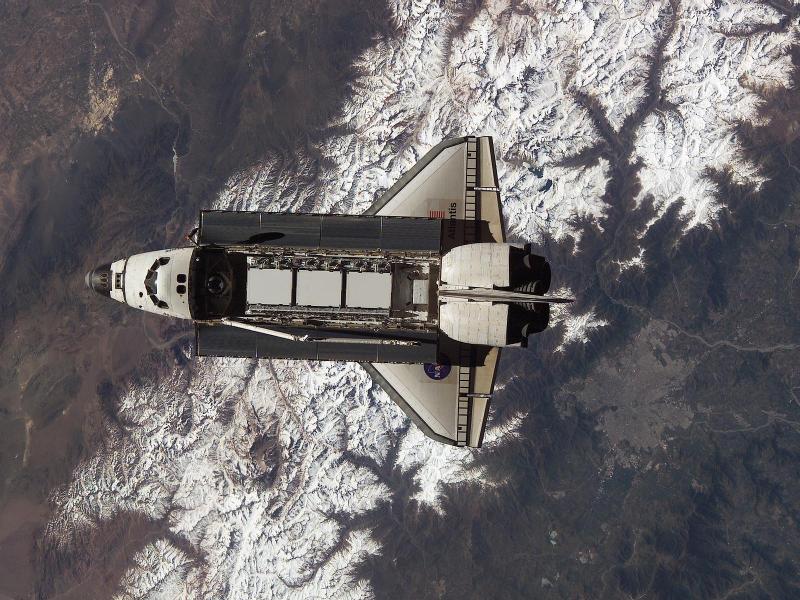Orbit
Space Shuttle Atlantis in Orbit over the Andes http://community.webshots.com/photo/7957600/65407958XLXVtH

Orbit Insertion: Orbit Insertion is a tricky and dangerous part of space missions. As a shuttle reaches it's target orbit it has to turn reducing its radial velocity, and increase it's tangential velocity. If the shuttle is going too fast it will shoot out into space. If it's going to slow it will fall back to earth.
For a shuttle to remain in orbit, it's radial acceleration must be equal to and opposite of gravitational acceleration. This doesn't scare engineers (They are Rocket Scientists). Tangential Velocity is calculated below.
Gravitational acceleration is a function of height
ge = GMe/(r +h)^2
ge = ar
ar = vt^2/(r +h)^2
GMe/(r +h)^2 = vt^2/(r +h)^2
vt = (GMe)^(1/2)
G = Universal Gravitational Constant G = 6.673*10e-11 N*m^2/kg^2
Me = Mass Earth = 5.96*10e24 kg
ar = radial acceleration
ge = acceleration due to gravity
r = radius earth, h = altitude
- Typically a space shuttle will orbit the earth at about 300km, in order to stay in orbit the shuttle must travel 7.73 km/sec or 27,773 km/hr.
- Most scientific Satilites orbit the earth at an altitude ranging from 4800 km to 9700 km, with velocities ranging from 21,492 km/hr to 17,928 km/hr
- Military GPS satilites orbit the earth at altitudes ranging from 9600 km to 19200 km, with velocities ranging from 17,964 km/hr to 14,9220 km/hr
- The higher the orbit the slower velocity required.
